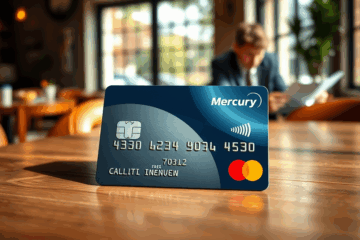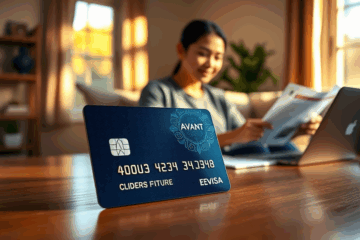Shop Online With Total Security and Peace of Mind
Total Security is essential when navigating the online marketplace.
In this article, we will explore how to protect your personal information and financial data while shopping online.
We’ll discuss advanced security solutions such as antivirus software and secure browsing tools, highlighting their benefits.
Understanding the importance of privacy protection will help you shop confidently and securely.
Whether making purchases or banking online, ensuring a safe experience is paramount.
Join us as we delve into the measures you can take for a secure online shopping journey.
Choosing Secure Payment Methods
In the digital age, choosing a secure payment method stands as the cornerstone of protected e-commerce.
With cyber threats continually evolving, safeguarding your financial transactions is absolutely essential.
Utilizing advanced payment solutions not only ensures that your transactions remain confidential but also gives more control over your financial data.
Unlike traditional methods like wiring money or mailing checks, modern payment systems provide enhanced security features that protect against unauthorized access and fraud.
Payment options like credit cards offer end-to-end encryption and charge-back protection.
They have fraud monitoring systems that promptly detect suspicious activity, providing timely alerts.
Digital wallets, such as Apple Pay and Google Pay, operate by tokenizing transactions, which means no real card details are transferred during payments.
This method significantly reduces the risk of data theft.
Furthermore, escrow-style services add an extra layer of security by holding payments until the buyer confirms the satisfaction of goods or services.
- Credit cards with fraud monitoring
- Digital wallets
- Escrow-style services
Embracing these secure payment solutions results in a shopping experience where buyers can focus on their purchases rather than fret over the security of their sensitive information.
Detecting and Avoiding Online Scams
Online scams are increasingly sophisticated, making it crucial to know how to detect and avoid them.
Suspicious emails often contain generic greetings, urgent calls to action, or links that lead to fake websites, while pop-ups can trick you into revealing personal information.
Recognizing these red flags and understanding how to navigate fake check-out pages can help protect your sensitive data from would-be scammers.
Recognizing Phishing Emails
Phishing emails often disguise themselves through common patterns in language and appearance.
Words such as “urgent action required” or “account suspension warning” aim to instill panic, prompting hasty clicks.
Phishers might mimic official logos or familiar sender addresses to create a veneer of authenticity.
They often exploit your trust in these brands, seeking to lure you into revealing sensitive information unscrupulously.
To combat this, always scrutinize the email address for subtle deviations from legitimate ones.
Never click attachments from unknown senders.
Visual cues also play a critical role, often utilizing fake login pages that resemble authentic websites.
These can appear almost identical, but slight URL discrepancies give them away.
Engage in safe practices: verify sender identity by contacting the institution directly.
Ensuring the email is genuine helps fend off potential breaches.
Checking Website Legitimacy
When shopping online, always start by checking the URL.
A safe URL prominently displays HTTPS rather than just HTTP.
The ‘S’ stands for secure, meaning data exchanged is encrypted.
Look for a padlock icon beside this URL.
Clicking the padlock will reveal further security certificate details, providing specific site authenticity information.
If the site’s certificate information is inaccessible, it could indicate a potential risk, and you should proceed with caution.
Moreover, trust badges play a crucial role in determining site credibility.
As explained by [Popupsmart](https://popupsmart.com/blog/how-to-use-e-commerce-trust-badges “How to Use E-commerce Trust Badges? 6 Practical Tips”), these badges indicate that a website has been vetted and trusted by a third-party, reinforcing its legitimacy.
Inspect these badges closely, as authentic ones often display icons like those from Norton or McAfee.
Relevant trust seals confirm that your financial and personal data remain secure, allowing you to transact without fear.
Being aware of these really important security indicators will safeguard your online shopping experiences.
Strengthening Device and Browser Security
In today’s digital landscape, securing your devices and browsers is essential for safe online shopping.
Built-in browser tools, operating-system safeguards, and reputable security apps work together to form a robust line of defense against online threats.
By leveraging these technologies, you can confidently protect your personal information and financial data while enjoying a seamless and secure shopping experience.
Activating Built-in Protections
Activate your browser’s built-in protections to enhance your online security.
Enable DNS over HTTPS in Firefox by accessing Settings and navigating to Privacy & Security.
Secure DNS, available on various browsers, adds an extra layer of protection against tracking.
Relevant text: Utilize device real-time protection by selecting options such as Turn on real-time malware scanning in your security settings.
Meanwhile, configure Secure DNS in Google Chrome for a more secure browsing experience.
Implementing these steps ensures that your online activity remains safe from malicious threats.
Crafting Strong Passwords and Managing Credentials
Creating unique and complex passwords is crucial for protecting your online shopping accounts.
It’s not just a recommendation but a necessity in today’s digital landscape.
Passwords form the front line of defense against unauthorized access, and using strong, unique passwords makes it extremely difficult for hackers to gain control over your accounts.
Adhering to the latest guidelines on password creation ensures that your credentials cannot be easily guessed or cracked.
Incorporating a password manager into your routine enhances security even further.
These tools safely store all your passwords, allowing you to maintain strong and varied credentials without the burden of remembering each one.
It’s important to avoid recycling old passwords, as reused passwords increase vulnerability across multiple accounts.
Regularly updating your passwords keeps your defenses fresh and responsive to new threats.
Additionally, enabling multi-factor authentication (MFA) adds another layer of security.
MFA asks for additional verification, such as a code sent to your phone, making it much harder for intruders to access your accounts even if they possess your password.
This added step, although minor, greatly enhances your online safety.
Stay proactive in protecting your online transactions by integrating these security practices into your daily routine to ensure your financial data remains secure while shopping online.
Total Security is not just an option; it’s a necessity for safe online experiences.
By utilizing the right security solutions, you can protect your personal and financial information, ensuring peace of mind while shopping and banking online.



0 Comments